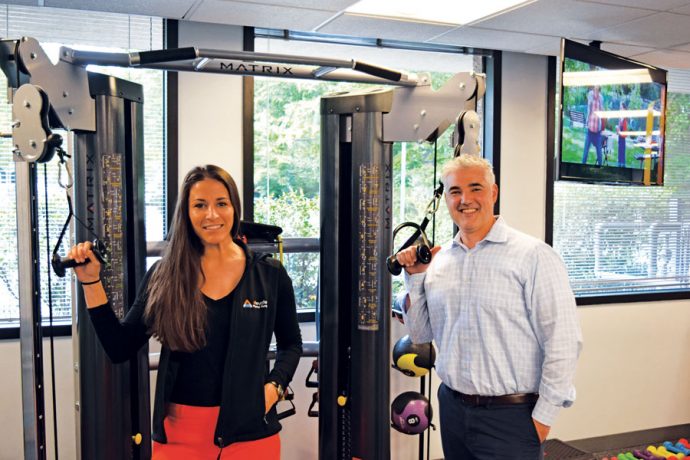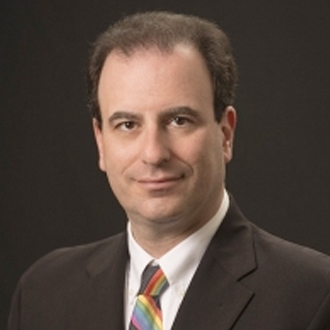In the realm of physical therapy, the curative power of cupping is not exactly a new idea. It was detailed in ancient Egypt’s Ebers Papyrus, written around 1550 B.C. and considered one of the oldest medical textbooks in the Western world. No less a figure than Hippocrates, a.k.a. the “Father of Medicine,” cited the benefits of cupping in his teaching, and the practice was extolled by such disparate figures as the fourth century Taoist alchemist and herbalist Ge Hong, the prophet Muhammad in the Quran and the 12th century Sephardic Jewish physician and scholar Moses ben Maimon, better known as Maimonides.
However, for Darien-based physical therapist Pamela Fioretti, patient interest in the therapeutic value of cupping had less to do with the learned insight of Hippocrates and Maimonides and more to do with the image of a contemporary sports icon with cupping circles visible on his muscular torso.
“After the 2016 Olympics with Michael Phelps using cupping for his competition, the phone couldn’t stop ringing with folks wanting to get cupping done,” recalls Fioretti, who received certification training to bring this ancient healing method to today’s aches and pains. “It helps to bring blood flow to the area and helps to pull some of the toxins out of the damage. It also helps with pain. Some of my patients have had great response just in increasing their range of motion.”
Cupping is among the therapeutic treatments that Fioretti and her business partners Steve Melchionno and Greg Besson provide at Elevate Physical Therapy, a new enterprise that opened in Darien in April. Among the other options offered by the therapists are dry needling, Graston Technique, Active Release Technique, Selective Functional Movement Assessment and Kinesio Taping. But for Fioretti, one of the most vital health strategies she can offer involves observing and asking tough questions.
“The key to success is something as simple as active listening,” she explains. “Sometimes, people need to have their story be heard. I have found in a lot of stories that people are in pain Monday through Friday, but they are fine on the weekend. You need to get into what’s going on during their work week and why they’re miserable. There are so many psychological factors that impact people’s rehabilitation. People are not coming here because of how great they feel — they are in pain and need help.”
With elderly patients, Melchionno is aware of the emotional trauma that often accompanies their injuries and illnesses, especially the apprehension that their physical mobility — and, by extension, their independence — could be imperiled by infirmity. For these patients, Melchionno takes a holistic strategy that makes the patient an equal partner in the treatment.
“You treat the whole body, you just don’t treat the hip replacement,” he says. “You want to work on balance, you work on cardiovascular that encourages healing — you get them on a bike, get them walking, encouraging them to be more active. If we get somebody to be pain free but they’re sitting on a couch all day, we haven’t succeeded.”
At the other end of the age spectrum, Melchionno is also dealing with a new wave of teenage athletes combatting a level of musculoskeletal pain — particularly shoulder and knee issues — that was not common in earlier generations.
“These kids train hard nowadays,” he observes. “A lot of kids are sticking to one sport. There’s a lot of pretty good research out there (showing that) if you switch sports every season, you are less likely to be injured because you’re giving your muscles a chance to rest.”
The Elevate Physical therapists have little chance to rest, especially when keeping up on the latest information related to their profession. Daily alerts to newly published research filter into their in-boxes, highlighting new considerations and approaches to wellness.
“There is so much research that it’s impossible to keep up with everything,” Fioretti says. “I focus much more on the orthopedic realm. Continuing education is so important for keeping up with new techniques and interventions like the dry needling. When I graduated from school eight years ago, that wasn’t in the forefront of orthopedics.”
For more insight on dry needling, Fioretti traveled earlier this year to the University of North Texas in Fort Worth to receive certification training on this technique. “I was quite sore by the end of it, because we were basically human pincushions for each other,” she adds, with a laugh. “But it was a great learning experience.”
Melchionno adds that being ahead of the proverbial curve is important for the future success of their new business, noting that some patients seek them out after unsuccessful and even unpleasant sessions with less-than-capable physical therapists. “It happens quite often,” he acknowledges. “You hate to hear it because it gives physical therapy a bad name. But at the same time, all therapists aren’t created equal.”
While the Elevate Physical Therapy team members are not nutritionists, they point patients to existing research on the benefits of low-inflammatory diets on the healing process. When quizzed about medical marijuana, however, Melchionno is often skeptical about why he is being asked. “I feel that a lot of times when people are asking for it, they are asking for it in the wrong manner,” he says.
During his talk with WAG, Melchionno found himself fielding a text message on his cellphone. When asked about the health risks of that ubiquitously intrusive device, he sighs and remarks, “I can’t say for certain, but I imagine there will be a ton of more carpal tunnel surgeries from all of this typing.”
For more, visit elevatept.net.


